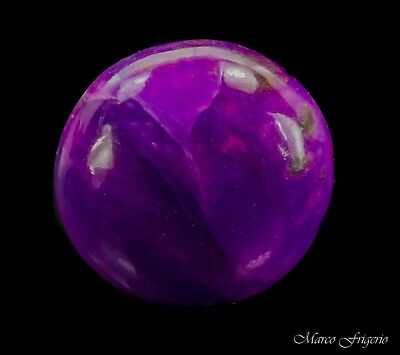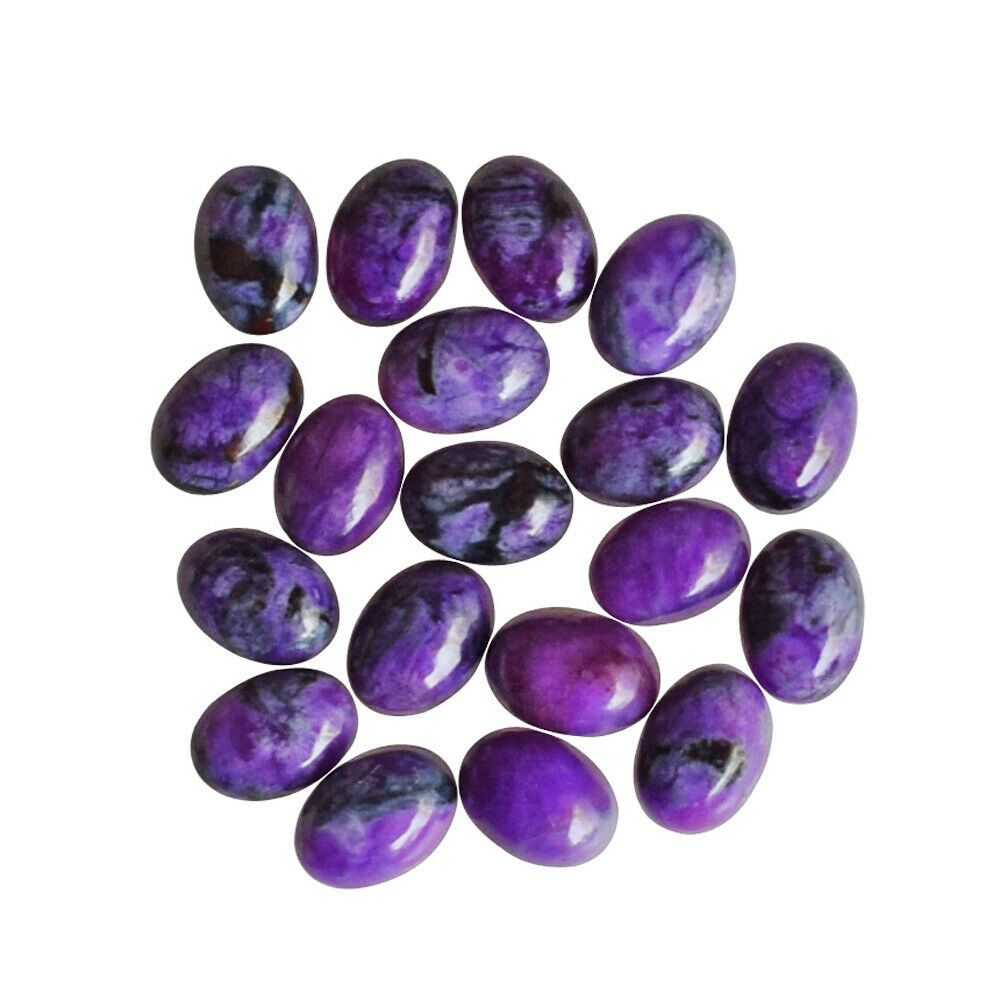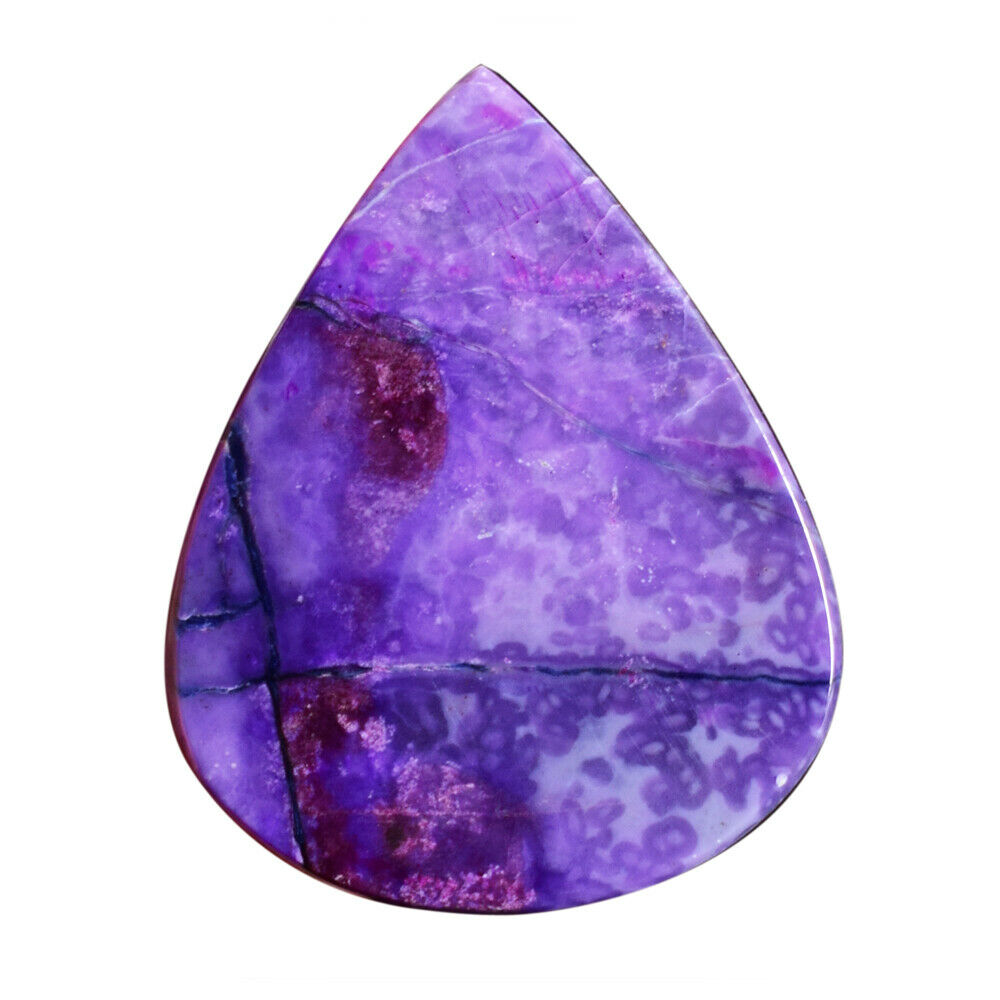-40%
Sugilite Cabochon Untreated Natural Gemstone AAA Quality 3,05 ct 10x3,5 mm
$ 144.67
- Description
- Size Guide
Description
AAA Untreated Quality Cabochon - Sugilite GemstoneStones cut from rough purchased in the late 90's - Kalahari Manganese Mines - South Africa
Pictures are enlarged and colors can vary slightly from original due to daylight lamps / sunlight
1st picture taken with frontal lighting - 2nd with back lighting to show transparency
Size : 10 x 3,5 mm Weight : 3,05 carat
**************************
Examination of jewelry-quality sugilite shows that it consists of manganese-bearing sugilite and other minerals in a polycrystalline aggregate. The material occurs in a large stratiform manganese orebody at the Wessels mine near Kuruman, South Africa. Some 12 to 15 tons of sugilite of varying quality are estimated to occur at the mine. The attractive purple color is due to the presence of about 1-3 wt. % manganese oxide. The research reported here revealed that there are actually two types of gem materials that have heretofore been called sugilite: one that is predominantly manganoan sugilite with minor impurity minerals, and the other that is chalcedony mixed with (and colored by) sugilite.
Thls particular color of sugilite,
which originates from the Kalahari Manganese Mines
area of South Africa, is relatively
new to the gem market. It is also being
marketed under the trade names
Royal Azel and Royal Lavulite.
***************
Sugilite
Sugilite from Wessels Mine in
Northern Cape Province
,
South Africa
General
Category
Cyclosilicate
Formula
(repeating unit)
KNa
2
(Fe,Mn,Al)
2
Li
3
Si
12
O
30
Strunz classification
9.CM.05
Dana classification
63.02.01a.09
Crystal system
Hexagonal
Crystal class
Dihexagonal dipyramidal (6/mmm)
H-M symbol
: (6/m 2/m 2/m)
Space group
P
6/mcc
Unit cell
a = 10, c = 14 [Å]; Z = 2
Identification
Color
Light brownish-yellow, purple, violet, reddish violet, pale pink, colorless
Crystal habit
Prismatic crystals, typically granular to massive
Cleavage
Poor on {0001}
Mohs scale
hardness
6–
6
1
⁄
2
Luster
Vitreous
Streak
White
Diaphaneity
Transparent to translucent
Specific gravity
2.74
Optical properties
Uniaxial (-)
Refractive index
n
ω
= 1.610 n
ε
= 1.607
Birefringence
δ = 0.003
Pleochroism
Weak
References
[1]
[2]
[3]
Sugilite
(
/
ˈ
s
uː
ɡ
ɪ
l
aɪ
t
/
SOO
-gi-lyt
), also known as
lavulite
, royal azel, cybeline, and wesselite, is a relatively rare pink to purple
cyclosilicate
mineral with the complex chemical formula
K
Na
2
(
Fe
,
Mn
,
Al
)
2
Li
3
Si
12
O
30
. Sugilite crystallizes in the
hexagonal
system with prismatic crystals. The crystals are rarely found and the form is usually massive. It has a
Mohs hardness
of 5.5 to 6.5 and a
specific gravity
of 2.75 to 2.80. It is mostly translucent.
Sugilite was first described in 1944 by the
Japanese
petrologist
Ken-ichi Sugi
(1901–1948) for an occurrence on Iwagi Islet,
Japan
, where it is found in an
aegirine
syenite
intrusive
stock
. It is found in a similar environment at
Mont Saint-Hilaire
,
Quebec
,
Canada
. In the Wessels mine in
Northern Cape Province
of
South Africa
, sugilite is mined from a
strata-bound
manganese
deposit. It is also reported from
Liguria
and
Tuscany
,
Italy
;
New South Wales
,
Australia
and
Madhya Pradesh
,
India
.
Note: The mineral is commonly pronounced with a soft "g", as in "ginger". However, as with most minerals, its pronunciation is intended to be the same as the person it is named after; in this case, the Japanese name Sugi has a hard "g", as in "geese".
[4]
Purple sugilite on a matrix of
baryte
crystals, Wessels Mine in Northern Cape Province, South Africa, size: 2.4 x 2.1 x 1.2 cm










